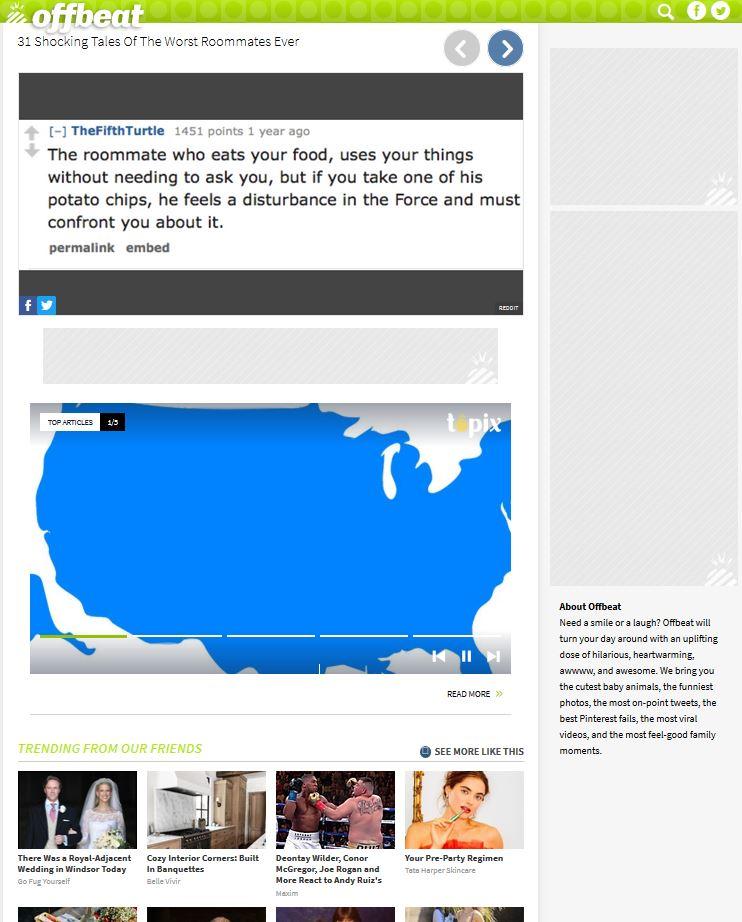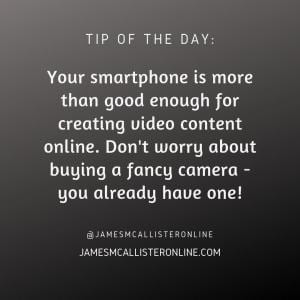Note: Listen to this post instead using the audio player below, and consider subscribing on your favorite podcast player!
How much more could you get done if you were working at 100% productivity, every second you’re building your company?
The truth is, almost nobody actually works as effectively as they could be. This is just as true for the big corporate CEO as it is for a first-time small business owner.
In every company, there is waste. This is after all, human nature. Nobody is completely efficient all of the time, and you certainly don’t have to be in order to succeed.
However, we all want to get everything that we possibly can out of each day. Out of our budgets. Out of our employees, if we have any. This means that we need to constantly take note of what’s actually delivering results, and what we’re spending too much time and money worrying about.
By simply changing a few key actions each day and honing in on what truly matters, you can waste less resources on things that do not move the needle, and make sure that your time and money is put to its best use.
1. Web Design
Unless you’re selling creative-based work, or your website is required to invoke a certain feeling in order to sell effectively, web design isn’t nearly as important as many entrepreneurs are led to believe.
It just doesn’t add up – unless you’re already an established website pulling in at least $10,000 of revenue a month, any marginal increase you’d gain by hiring an expensive designer just won’t yield a return that’s worth it.
Visitors primarily care about two things:
- Being able to find what they need quickly and effectively.
- Their expectations are met once they find it.
In many cases, fancy design elements can detract from these two things, adding clutter and unwanted noise, distracting the user from achieving their goal.
Therefore, rather than investing thousands of dollars or more into an expensive designer, or obsessing whether or not your buttons should be blue or green, focus on what matters – your message.
Pick up a quality theme for your CMS of choice, and tweak it until it feels like it embodies yourself and your brand. Build a navigation system that makes sense. Then, pay more attention to how you’re going retain visitors once you’ve actually got them on your site. Focus on engaging them further, and encouraging them to take action.
Design is important, and I would never suggest that you ignore completely. Ultimately however, it doesn’t matter how beautiful your site is, if your visitors are constantly clicking the back button.

2. Content Length
Is your content long enough? Does it have a shot of ranking in Google?
What if it’s too long? Will people feel intimidated and shy away from even beginning?
These are surprisingly common questions that content creators face when marketing their brands. They look for the magical word count or video length that is sure to get them the maximum amount of consumers, without giving second thought to anything else in the creation process.
Honestly however, this is just silly. You’re altering your message to fit some pre-defined word count, as if there were a one-size-fits-all solution for your content.
Instead, worry about delivering your message. Do so in the most effective and valuable way possible.
There is no word count you should strive for. Use exactly as many words as it takes to deliver your message. Do this while including all of the important details, but without padding your article with useless fluff.
Respect your audience’s time. Create articles and videos that are so complete, your audience wouldn’t possibly need to consume any other article on the subject.
Then, link out to these articles or videos whenever that topic comes up. This way, you ensure that you’re covering everything once, and that one time is sufficient enough to continue delivering value for years to come.
3. “Hidden Secrets”
Stop wasting time and money trying to discover some hidden secret that will make your business successful. These don’t exist, and you’re hurting yourself with the belief that there’s simply something you don’t know.
Obviously, businesses need strategy, and not everything will be obvious – even to experienced businesspeople. However, business is also a lot more straightforward than it’s made out to be. Most of what works is common knowledge and would work for you if you’d take the time to implement it.
Perhaps I’m shooting myself in the foot by saying this, but I really don’t share anything in my courses that isn’t already mentioned elsewhere on the internet. I share experiences and examples to help you tailor the advice to your specific business, but very little of what I share is 100% original.
However, what I do share actually works. I cover the topics comprehensively, and in a straightforward, practical, easy-to-implement manner. It’s all organized in one place, saving months or years of discovering all of it on your own.
Yeah, a lot of the information is available for free elsewhere. Yeah, some of it is probably on my blog here. Are my courses still worth the price? Absolutely. Why?
They deliver the results you’re hoping to get out of them.
Quit looking for secrets. Find something that’s proven to work, and go all-in on it.
[easy-tweet tweet=”Quit looking for secrets. Find something that’s proven to work, and go all-in on it.” user=”JamesMOnline” usehashtags=”no”]
4. Equipment / Software
Unless you are already established and making money, you don’t need the following:

- An expensive computer
- An expensive microphone
- An expensive camera
- A dedicated server
- An expensive theme
- Expensive plugins (when free alternatives are available)
These things certainly help. However, when you’re just starting out, these things don’t make a big enough difference to warrant their cost.
An expensive microphone will not make up for poor content. Similarly, a paid email marketing pop-up plugin will not get you a ton of subscribers if you only get 10 visitors a day.
These things do make a difference, but the timing here is very important. You need to calculate when the exchange is actually worth it.
Instead, focus on your content. Focus on your message. Focus on actually building up your audience right now, so the difference is greater when you do decide to purchase those things.
As noted earlier with web design, if your message is engaging enough, people will stick around – even if the delivery could be improved.
5. Vanity Metrics
Perhaps most common out of everything on this list, do not spend too much time worrying about vanity metrics.
Vanity metrics are metrics that don’t actually do anything to move you towards your business goals – at least not directly. They may include things such as:
- Social followers
- Blog post views
- Number of subscribers
- Ad / brand impressions
- People who have signed up for a trial, but have not converted into buyers.
Vanity metrics fool us into thinking that we’re making progress, when the reality is that we may not be.
Yes, social followers, views, and so on do correlate with higher sales. However, all of the followers in the world won’t mean anything for you if you’re not able to monetize them, and turn them into revenue at some point.
Businesses are built off of revenue. Instagram likes on their own will not pay the bills. Wanting to make money from your audience is not a bad thing – it is after all, the entire reason you’re doing everything that you’re doing.
Conclusion
If you’ve been spending a lot of time worrying about one of these five things, don’t feel bad. Most entrepreneurs go through this stage, and truth be told, many never come out of it.
Businesses thrive when they operate in reality. The reality is, you need to be focusing on things that actually move the needle for you. Measurable actions that generate a healthy return.
From there, it’s only a matter of scaling what works, and eliminating what doesn’t.
I hope that this article has been helpful for you. I’d love to know how you plan to improve your focus going forward, and anything else you’d recommend adding to this list.
To your success,
– James McAllister
Summary:
Review the main points of this article in the SlideShare below. Feel free to embed this on your site, use it in your organization, and share it with others! All I ask is that you give credit! (Download links are available from SlideShare’s website, which you can access by clicking the LinkedIn icon)

Hi James.
I agree with your comments. From time to time I remind myself to just get on with doing the job, as striving for perfection is often an excuse to procrastinate.
It’s definitely wise to spend less time on what doesn’t add much value, and more on what does.
Thanks for sharing.
Nathan.
Nathan Ambrose(Quote)
Hey Nathan! Good to see you again.
You’re right, perfection is just an excuse in the vast majority of cases. Even we do achieve what we believe to be perfection, it’s only our perspective – customers could think something totally different. Better to get going on the next thing and make adjustments later if necessary.
Simply being conscious of the choices we should be making and what’s actually adding value helps us to make better use of our time!
James McAllister(Quote)
Hi James,
I can’t agree any less with you. We see marketers regularly obsessing with their website design, or which metrics quantify. With a substantial budget, you can get it done, but the fact that you’re a newbie or just starting out, those should not be the #1 priority.
Moss Clement(Quote)
Hey Moss, you’re absolutely right!
It just doesn’t make sense from an ROI perspective. If you only are pulling in a small amount of revenue, even a 50% increase in sales may not cover the cost of an expensive web design or similar project. Especially since that money could have been used to properly optimize your marketing funnel in other areas.
There are definitely better things to focus on early on!
James McAllister(Quote)